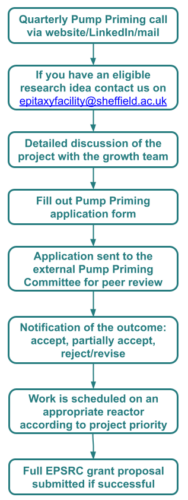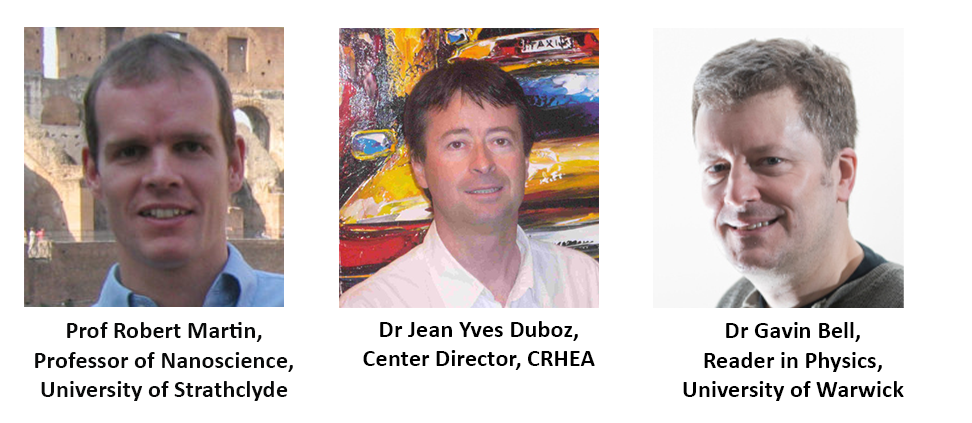Pump Priming
The National Epitaxy Facility operates a ‘Pump-Priming’ scheme where a limited number of wafers are provided to researchers free of charge and without the need for a current EPSRC grant.
The scheme is designed to stimulate UK strategic activity in III-V and group IV semiconductors with the expectation that the recipient will, within 6 months, write a full EPSRC proposal building on the results of the feasibility study.
The scheme is open to all persons who normally qualify to hold an EPSRC grant.

How to apply
The recent pump priming call is now closed. Please keep an eye on the website for further updates.
If you are interested in applying for the scheme, contact us via email (epitaxyfacility@sheffield.ac.uk) to discuss the requirements and feasibility of your project with a relevant member of the National Epitaxy Facility growth team.
You will then be asked to complete the proforma (NEF Pump Priming Proforma – available from the Downloads banner to the right) outlining the strategic need for the work, the principle(s) to be demonstrated, the resources required, the time-scales involved and a statement indicating how a full EPSRC proposal should result from the successful conclusion of the short study/demonstration.
Each request will be considered for approval by the National Epitaxy Facility Pump Priming Committee with the selection of projects based on scientific quality, strategic need, and the Facility capability.
Pump Priming Committee

Pump Priming Projects
Some of our Pump Priming projects include:
- InGaAs Quantum Dot/Quantum Well based waveguide structures for photonic integration
- Selective growth of GaN on Si on sapphire for CMOS integration
- Near surface InAs Quantum Dots for plasmonic coupling
- Ultrafast multi-active region Quantum Dot lasers
- Semiconductor-Superconductor hybrid 2DEG devices
- Green emitters for surface enhanced Raman sensors
- Droplet epitaxy for quantum emitters
- GeSn for photodetector applications
Our current Pump Priming project stats are:
- Over 40% support early career academics starting new positions or fellowships
- Over 60% support studies conducted by new users of the facility
- 14 current projects are carried out at 10 different institutions
The Pump Priming scheme has recently been expanded thanks to new partnerships to include novel and emerging materials, such as:
- Gallium Oxide (via University of Bristol and Swansea University)
- Silicon Carbide (via University of Warwick)
- 2D Transition Metal Dichalcogenides (TMDs) (via University of Southampton)
- II-VIs (via Swansea University)
- 2D III-VIs (e.g., GaSe) and h-BN (via University of Nottingham)
- Topological Insulators (Bi,Se,Te,Sb) (via University of Leeds)
- THz and mid-IR devices (via University of Leeds)
The epitaxy is provided thanks to the universities listed above, but to access the scheme you need to apply through the National Epitaxy Facility.
The new commercial transfer print tool at the EPSRC National Epitaxy Facility hub at the University of Sheffield also enables projects in heterogeneous integration of materials and devices.
